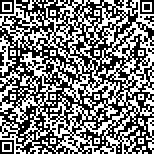张俊红,王丽,郑银燕,等.低频经颅磁刺激联合前庭康复训练治疗持续性姿势-感知性头晕的疗效观察[J].中华物理医学与康复杂志,2024,46(4):317-321
扫码阅读全文

|
| 低频经颅磁刺激联合前庭康复训练治疗持续性姿势-感知性头晕的疗效观察 |
|
| |
| DOI:10.3760/cma.j.issn.0254-1424.2024.04.006 |
| 中文关键词: 持续性姿势-感知性头晕 低频经颅磁刺激 前庭康复训练 焦虑 眩晕 |
| 英文关键词: Dizziness Transcranial magnetic stimulation Vestibular rehabilitation training Anxiety |
| 基金项目: |
|
| 摘要点击次数: 3921 |
| 全文下载次数: 3757 |
| 中文摘要: |
| 目的 观察低频重复经颅磁刺激(rTMS)联合前庭康复训练(VRT)治疗持续性姿势-感知性头晕(PPPD)的临床疗效。 方法 采用随机数字表法将100例PPPD患者分为观察组及对照组,每组50例。2组患者均给予倍他司汀药物口服及VRT训练,观察组患者在此基础上辅以左侧前额叶背外侧皮质区(DLPFC)低频rTMS治疗。于治疗前、治疗后1周、2周及4周时分别采用眩晕残障量表(DHI)、前庭症状指数量表(VSI)及特异性活动平衡信心量表(ABC)评估患者前庭功能改善情况,同时于上述时间点采用汉密尔顿焦虑量表(HAMA)对患者焦虑情绪进行评定。 结果 治疗后1周、2周及4周时2组患者DHI、VSI评分均进行性减少,ABC评分则进行性增加(P<0.05);观察组患者在治疗后2周、4周时其HAMA评分较治疗前明显减少(P<0.05)。治疗后2周、4周时观察组DHI评分[分别为(50.0±4.3)分、(34.0±3.2)分]、VSI评分[分别为(5.72±1.71)分、(4.62±1.36)分]及HAMA评分[分别为(17.8±1.7)分、(12.2±3.3)分]均较同期对照组显著减少(P<0.05),ABC评分[分别为(59.4±6.0)分、(71.3±6.3)分]则较同期对照组明显增加(P<0.05)。 结论 低频rTMS联合VRT训练能显著缓解PPPD患者头晕、不稳感等前庭症状,改善焦虑情绪,提高生活质量,该联合疗法值得临床推广、应用。 |
| 英文摘要: |
| Objective To observe any clinical utility of combining low-frequency repetitive transcranial magnetic stimulation (rTMS) with vestibular rehabilitation training (VRT) in the treatment of persistent postural sensory dizziness (PPPD). Methods One hundred PPPD patients were randomly divided into an observation group and a control group, each of 50. Both groups were given betahistine orally and VRT training, the observation group additionally had low-frequency rTMS applied over the left dorsolateral prefrontal cortex. A vertigo disability scale (DHI), a vestibular symptoms index (VSI) and specific activity balance confidence scales (ABCs) were used to quantify any improvements in vestibular function before the treatment and 1, 2 and 4 weeks later. Anxiety at those time points was also quantified using the Hamilton Anxiety Scale (HAMA). Results The average DHI and VSI scores of both groups decreased gradually during and after the treatment, while the average ABC scores gradually increased. The average HAMA scores in the observation group at 2 weeks and 4 weeks after the treatment were significantly lower than before the treatment. At 2 and 4 weeks after treatment, the average DHI, VSI and HAMA scores of the observation group were all significantly lower than the control group′s averages, while its average ABC score was significantly higher. Conclusion Low-frequency rTMS combined with VRT training can significantly relieve vestibular symptoms such as dizziness and instability in PPPD patients. It can also relieve anxiety, improving their quality of life. Such therapy is worthy of promotion in clinical practice. |
|
查看全文
查看/发表评论 下载PDF阅读器 |
| 关闭 |